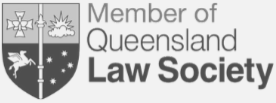Parents under surrogacy have to be genetic parents : Europe’s highest court
In the case, called Paradiso and Campanelli v Italy, the intended parents had, in breach of Italian law, gone to Russia and undertaken surrogacy there. There was argument in the case about whether the Russian birth certificate was valid (as it appears Russian law is unclear when there is no genetic relationship between the intended parents and the child), which said that the intended parents were the parents of the child. The child was conceived from both donor egg and donor sperm. The donors were anonymous- meaning that the child’s genetic origins were unknown.
Within a few months of the intended parents returning to Italy with the child, Italian authorities acted to place the child into adoption. The intended parents fought this unsuccessfully, all the way to the highest court in Europe, the Grand Chamber of the European Court of Human Rights.
The court determined by 11 judges to 6 that the actions of Italy did not breach Article 8 of the European Convention on Human Rights. Article 8 provides that everyone has the right to respect for his private and family life. The prime question determined on the appeal was whether there was a family.
The court concluded that there was not a family as a matter of law because neither of the intended parents was related to the child. If one of them had been related, then it would have been a different outcome.
It was noted that due to an absence of a genetic relationship, their relationship was not recognised as parent and child under Italian law.
The intended parents argued that they were parents under Russian law, and that therefore the parent/child or family relationship should be recognised. The court noted that the intended parents had acted illegally under Italian law in bringing a foreign child who had no biological ties with either of them, in breach of the rules laid down as to international adoption, and that they had entered into an agreement for the husband’s sperm to be used to fertilise eggs from another woman, in breach of Italian law.
The court then considered whether there had been a de facto family in existence, but because of the short period between when the child came into their care and when the child was removed by Italian authorities, there was not enough time to establish that de facto care.
The court found that the conduct of Italian authorities impugned their private life, as they had a genuine intention to become parents, initially via IVF, then by applying for and obtaining formal approval to adopt, and lastly by turning to egg donation and the assistance of a surrogate.
The court found that the Italian authorities actions were justified in the absence of any genetic ties and the breach of Italian law concerning international adoption and on medically assisted reproduction. The measures taken by authorities were intended to ensure the immediate and permanent rupture of any contact between the intended parents and the child, and the child’s placement in a home and also under guardianship.
The court stated:
“By prohibiting surrogacy arrangements, Italy has taken the view that it is pursuing the public interest of protecting the women and children potentially affected by practices which it regards as highly problematic from an ethical point of view. This policy is considered very important…where, as here, commercial surrogacy arrangements are involved. That underlying public interest is also of relevance in respect of measures taken by a State to discourage its nationals from having recourse abroad to such practices which are forbidden on its own territory.”
Parallels with the International Convention
Australia, like Italy is a party to the International Convention on the Rights of the Child. Its Article 16 is very similar to Article 8 of the European Convention, ” No child shall be subjected to arbitrary or unlawful interference with his or her privacy, family, home or correspondence…”
We shall wait and see what impact, if any, this case might have as to any views regarding the International Convention and undertaking surrogacy overseas in breach of Australian law.












